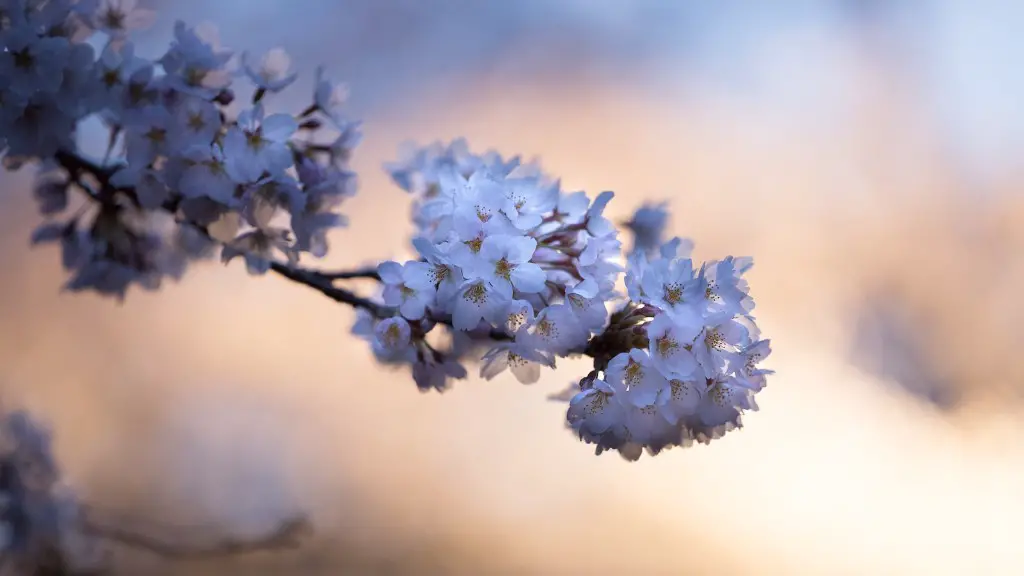Watering a Weeping Cherry Tree
Weeping cherry trees are beautiful, ornamental trees that add a wonderful touch of beauty to any landscape. They are also easy to maintain and grow, making them ideal for many gardeners. However, these trees do require some extra care during certain periods. One important part of caring for the tree is knowing when to fertilize it.
According to the National Arboretum, the best time to fertilize a weeping cherry tree is when it is actively growing during the spring and summer. The amount of fertilizer to use will vary depending on the type of soil, but in general, a balanced fertilizer with equal amounts of nitrogen, phosphorus, and potassium should be used. The exact application rate will be listed on the fertilizer label.
It is essential to use the right type of fertilizer for a weeping cherry tree. Avoid using too much nitrogen-heavy fertilizer, as this can lead to an excessive amount of foliage, which in turn can reduce flowering. Also, it is important to apply the fertilizer according to the label instructions, as applying too much can burn the roots, resulting in a stunted growth.
For the best results, it is recommended to split the application in half and feed the tree twice during the growing season, once in the spring and again in the summer. This will ensure that the tree receives the necessary nutrients throughout the growing season.
Pruning a Weeping Cherry Tree
Pruning a weeping cherry tree can help to maintain a healthy, attractive tree with plenty of flowers each season. Pruning should be done in late winter or early spring before the tree begins to leaf out. This will help to minimize the risk of shock to the tree.
The tree should be pruned to achieve a vase-like shape with several main branches that are evenly spaced around the trunk. This will provide an attractive, full shape to the tree and will also allow sunlight to reach the center of the tree. Any dead or diseased branches should be removed completely.
It is also important to remove any branches that are crossing or rubbing against each other, as this can cause damage to the tree. The ultimate goal of pruning should be to ensure that the tree has plenty of airflow and does not become too dense and crowded.
Mulching a Weeping Cherry Tree
Mulching is an important part of caring for a weeping cherry tree. Mulching will help to retain moisture and prevent weeds from competing with the tree for resources. A 3” layer of mulch should be applied around the tree each spring, taking care not to cover the trunk.
Organic mulches such as leaves, pine needles, grass clippings, and chopped bark are all suitable for the tree. While these mulches will eventually decompose and release their nutrients into the soil, it is important to replenish the mulch every year or two.
It is also important to avoid using inorganic mulches such as rocks or plastic, as these can prevent air and water from reaching the roots. This can cause the tree to become stressed and reduce flowering.
Protection During Winter
Weeping cherry trees are hardy trees that can handle a variety of climates, but there are some steps that can be taken to help protect them during the winter. This is especially important for young trees, as they are more vulnerable to the cold.
One way to protect the tree from the cold is by covering it with a blanket or burlap sack. This will help to keep the cold air away from the tree and will also protect from the sun’s rays. Make sure to cover the entire tree, and remove the cover during warm days to ensure the tree does not become too hot.
It is also important to keep the soil near the tree moist during the winter. This will prevent the roots from drying out and will help to insulate the tree from the cold. If the weather is especially cold, it may be necessary to add an extra layer of mulch around the tree to help retain moisture and provide extra insulation.
Signs of a Unhealthy Weeping Cherry Tree
A healthy weeping cherry tree will produce plenty of flowers each year and have a vibrant, lush green foliage. However, it is important to be on the lookout for signs of an unhealthy tree.
If the leaves become discolored, develop spots or look wilted, this may be a sign that the tree is not receiving enough nutrients. It is also a good idea to check for any signs of pests or diseases, such as aphids or powdery mildew.
The tree may also become stressed if it is planted in an area that is too shady or where the soil is not ideal. If the area is too shady, it can reduce the amount of sunlight the tree can absorb, which in turn will reduce blooming. If the soil is too compacted or lacks essential nutrients, the tree can become stressed and not grow to its full potential.
Diseases to Look Out For
While weeping cherry trees are generally hardy and disease resistant, there are a few diseases that can affect the tree.
One of the most common is bacterial wilt, which is caused by a bacterium that enters the tree through wounds and spreads through the sap in the tree. The symptoms include wilting of the leaves and branches and eventually death. To help prevent this disease, make sure to keep the tree healthy and free from stress.
Another common disease is apple scab, which is caused by a fungus. This disease can cause discoloration and scab-like spots on the leaves. To prevent this disease, it is important to keep the tree well-pruned and properly mulched.
Pest Control
Weeping cherry trees can be susceptible to insect pests, so it is important to be on the lookout for any signs of infestation.
One common pest is the Japanese beetle, which can feed on the leaves of the tree and cause defoliation. To help deter these insects, it is important to regularly monitor the tree and remove any pests or signs of infestation as soon as possible.
Likewise, aphids can be a problem for weeping cherry trees. These pests feed on the sap from the leaves and stems and can cause distorted growth. To help control aphids, it is important to use natural pest control methods such as releasing beneficial insects, or spraying with horticultural oil or soapy water.
Fertilizing for More Flowers
Fertilizing a weeping cherry tree will help to promote healthy growth and greater flowering. The best time to fertilize is when the tree is actively growing in the spring and summer. When applied properly, fertilizer can help to increase flowering and encourage the tree to reach its full potential.
It is also important to select the right type of fertilizer for the tree. For example, a fertilizer with a balanced ratio of nitrogen, phosphorus, and potassium should be used. It is also important to follow the application instructions on the fertilizer label to prevent over- or under-fertilizing.
Finally, make sure to split the application into two separate feedings, one in the spring and one in the summer. This will ensure the tree receives the necessary nutrients it needs throughout the growing season.
Healthy Soil Maintains Growth
Weeping cherry trees do require some extra care in order to thrive and provide plenty of beautiful blooms each season. One of the most important parts of maintaining a healthy tree is proper soil care.
This means ensuring that the soil has the necessary organic material, nutrients, and air to keep the tree healthy and promote robust growth. One way to ensure the soil is healthy is by adding compost or aged manure to the soil each year. This will help to provide essential nutrients for the tree.
It is also important to avoid compacting the soil around the tree, as this can reduce the amount of oxygen in the soil, which can lead to unhealthy trees. Loose, well-drained soil is best, so it is important to check the soil during the growing season.
Fungal Diseases
Weeping cherry trees are occasionally vulnerable to fungal infections. Common fungal diseases include powdery mildew, black knot, and anthracnose.
Powdery mildew is a common fungal disease, which can cause a white, powdery substance to form on the leaves and stems of the tree. This fungus can cause the leaves to become distorted and can eventually kill the tree. To help prevent powdery mildew, it is important to keep the tree well-watered and space out the trees in the landscape so that there is plenty of airflow.
Black knot is another fungal disease, which causes black and bumpy knots to form on the branches of the tree. This disease can eventually kill the tree if it is not treated promptly. To help prevent this disease, it is important to routinely inspect the tree and remove any infected branches.
Anthracnose is a fungal infection that usually occurs during periods of cool and wet weather. The disease can cause brown spots to form on the leaves, resulting in defoliation. To help prevent this disease, it is important to keep the leaves dry. This can be accomplished by avoiding overhead irrigation and regularly pruning the tree to ensure there is plenty of airflow.
Root System For Vital Nutrients
The root system of a weeping cherry tree is essential for absorbing nutrients and water, so it is important to ensure that it is healthy and free from disease and pests.
The roots should be kept moist, but not soggy, and should receive adequate drainage. If the soil is too compacted or lacks essential nutrients, the roots may not be able to absorb enough water and nutrients and the tree can become stressed.
Roots should also be kept free from disease and pests. These can enter the root system and cause damage, resulting in a weakened tree. If possible, it is best to avoid using soil that has been previously used for another tree, as this could introduce pests or disease.
Finally, periodically check the soil for any signs of compaction or damage. If the soil is too dry or compacted, aeration and amendment may be necessary to improve drainage and ensure the roots have access to the necessary nutrients.

